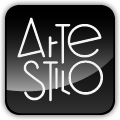Pedro de Andrés, sculptor profession:
He was born in Madrid in 1957. In 1974 he entered the School of Fine Arts of San Fernando, Alcalá de Henares, where he studied design, modeling and foundry among other activities.
The reasons that led him to this profession and specialty, have a simple answer, his father had a foundry in the north of Madrid, "La ventilla". Formerly it was tradition to accompany the father to work to learn and participate in the trade.
Finished the studies, it begins professionally in diverse activities of the advertising sector, mainly in the creation of logos and corporative models. After an extensive professional career with exhibitions and recognitions of all kinds, it returns to its origins. He is currently dedicated to the creation and foundry of his works and commissions, at the same time that he teaches design and modeling in training schools.
THE BRONZE: it is one of the oldest metals that are known, its composition is copper and tin, two soft metals that when melted acquire properties of extraordinary hardness and resistance.
FUNDICION A LA ARENA: Cast iron system that Pedro de Andrés often uses, sand molds are created that are used only once, which is why they are very laborious and artisan processes.
REVIEW: After the casting comes the revision phase, it consists of removing the edges and marks left by the molds, finally polishing.
PATINADO: The dark bronze that we usually see in exhibitions does not appear that way naturally, it is a process that is called "patina". Each artist gives a termination according to his criteria, in the case of Pedro de Andrés, he uses a procedure that we will not discover to be a professional secret.
I'll just say that, the finish we see is done through a rapid oxidation process, combination of temperature, acids and time. The figure is heated, reached the point of temperature, is immersed in acids for a while, which causes the oxidation of bronze, having a high copper content, the oxidation gets these iridescent between blue and green.
FINAL FINISH: The figure is polished again and mounted on a marble base.
Sculpture style: Impressionist figurative.
Figurative art or representational art: it is art that, unlike abstract art, is defined by the representation of figures, understanding these as identifiable objects through recognizable images; either by procuring the likelihood (artistic realism), either by distorting them in some way: idealizing them (artistic idealism), intensifying some of their aspects (caricature, expressionism), or opting for one or another form of representation (symbolism, schematism)
